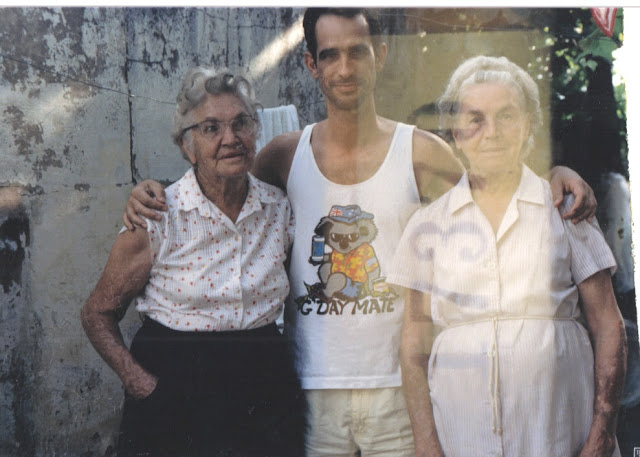Monday 15 March 2021
Baurú & São Paulo folks visit relatives in Marília in February 1968
Tuesday 2 March 2021
Albina Rosa de Jesus died on 5 March 1984
This is most certainly the last photo of my grandmother Albina Rosa de Jesus - here with her second oldest daughter Dulce Roza Amorim some time in late 1983, at Dulce's garden on Rua Ignacio Pereira da Rocha, in Pinheiros, São Paulo. Albina would die a few weeks later on 5 March 1984.
Schooling in Marilia

I Grupo Escolar de Marília, in 1933.
Placidina Nazaré's funeral in Ourinhos-SP in 1923
AMÉRICA DARIN NOGUEIRA (17 April 1907 - 11 March 1990)
América Darin, Luiz Carlos Amorim & Rosa Darin in Marília, 1989.
Wednesday 13 January 2021
Antonia & Mario Amorim
Ambition is a force which drives people in different ways and intensity. Among the 7 Amorim siblings born of Fernando Antonio Amorim and Albina Rosa de Jesus,
Antonia (1921),
João (1923),
Mario (1926),
Dulce (1929),
Claudio (1931),
Luiz (1934) and
Maria Rosa (1938)
we could surely say Antonia and Mario were the ones conscious of their socio-economic situation at a fairly early age and did their utmost to get away from poverty.
Antonia who had been blessed by good looks managed to enter the work force of a Canadian multinational called Brazilian Telephone Company which established itself in Marilia in the 1930s.
Mario who started working as a cotton picker, factory-hand and as a shoe-cobbler soon realized he had to have an education in order to climb the social ladder. Mario was the first and only Amorim progeny who entered and completed high school going on to enter Normal Course and become an elementary-school teacher. Not that he wanted to become a school-teacher which was a profession almost exclusively chosen by females, but to go on to further his education.
In 1685, St. Jean-Baptiste de La Salle, established the Institute of the Brothers of the Christian Schools, founded what is generally considered the first normal school, the École Normale, in Reims, Champagne, France.
The term "normal" in this context refers to the goal of these institutions to instill and reinforce particular norms within students. "Norms" included historical behavioral norms of the time, as well as norms that reinforced targeted societal values, ideologies and dominant narratives in the form of curriculum.
cousins José Martins, José de Oliveira & Mario Amorim.








